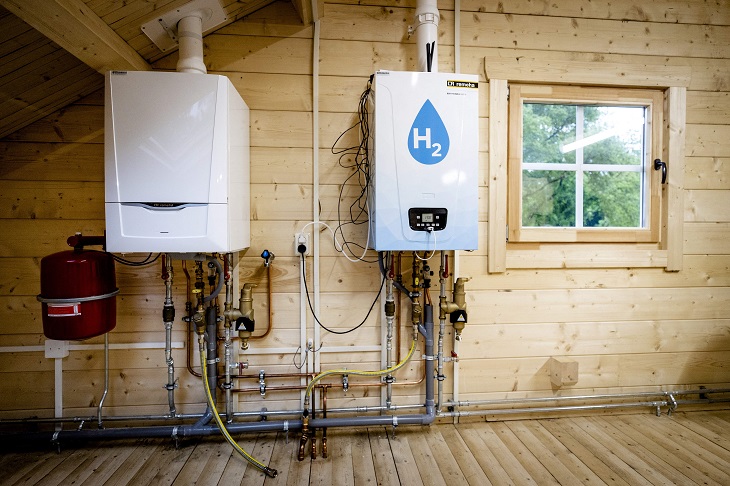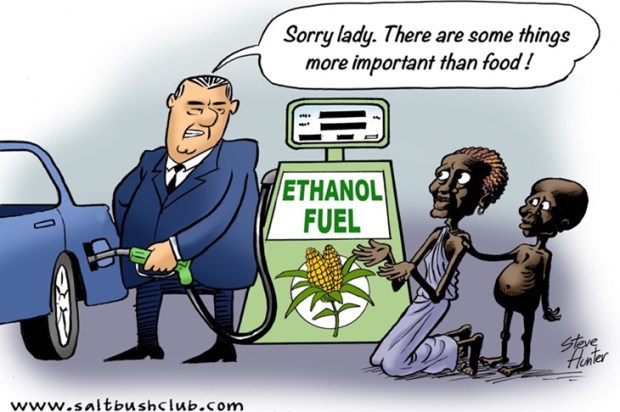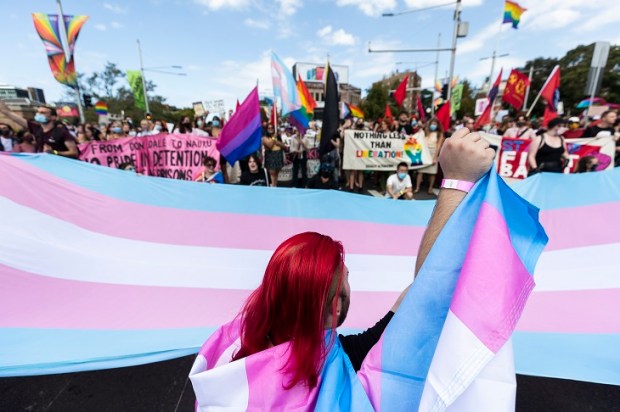The hydrogen balloon may be deflating for mining companies. Twiggy Forrest touts hydrogen as some kind of saviour for the planet, but in reality, large-scale commercialisation of production is likely years away. Fortunately, as with other renewables, the meeting of misguided minds of the leaders of the US and Australia, has opened the door to yet more taxpayer-funded subsidies.
Two companies are exploring for ‘Gold’ hydrogen in South Australia, if found, this could provide a competitive option to natural gas for energy generation. Other varieties of hydrogen currently remain uncompetitive with fossil fuels because of their production costs. Despite this, the planning of future projects has expanded to over $250 billion. There is a massive hydrogen plant announced for WA; this is one of several ‘hubs’ no doubt requiring yet more taxpayer subsidies. This plant will eventually cover an estimated 6,500 sq km of land, with environmental and ancient Aboriginal sites still to be contested. It will be interesting to see what sort of green law-fare is applied to his plans.
Historical energy sources, apart from uranium, have all used fossil fuels containing primarily hydrogen, carbon, and nitrogen. Concern about rising CO2 levels and their global warming potential has led to the examination of different options to produce electricity. The current use of coal, natural gas, and nuclear power is, in the future, likely to be replaced by non-polluting alternatives. The big problem being their increased cost, reliability, and availability.
Nuclear power generation has become more acceptable and less expensive with small modular reactors (SMRs) being built. Research into nuclear fusion, the holy grail of energy production, is one option being explored as it does not produce CO2; the other more advanced approach is the use of hydrogen as fuel. There are numerous hydrogen generation options being developed, according to the starting material and generation process, a rainbow of colours has developed; there seems to be some variation in definition:
Brown hydrogen uses lignite and is considered the worst polluter.
Black uses coal; with steam, these processes as well as producing hydrogen, release CO2 which then needs carbon capture and storage (CCS).
Grey uses steam to extract hydrogen from natural gas (methane, CH4) without carbon capture.
Blue is the label if the carbon is captured and stored.
Turquoise is also produced from natural gas or waste plastic, but the methane pyrolytic process captures carbon as a solid.
Red Hydrogen uses nuclear power and a catalytic process to convert water to hydrogen and oxygen.
Purple/Pink uses nuclear to power an alternative water chemo-thermal electrolysis.
Yellow hydrogen uses solely solar power to convert water by electrolysis.
Green labelled hydrogen uses the same process, but powered by various renewable energy sources.
There is also Gold hydrogen, which usually comes in small amounts from natural sources, mixed with methane gas extraction. Exploration has commenced in South Australia in both the Yorke and Eyre Peninsulas, where previous surveys, looking for natural gas, have suggested massive deposits of almost pure hydrogen, conservatively estimated at 1.3 billion Kg.
A new, more efficient electrolyser has been developed at the University of Wollongong; the process is being developed by Hysata and plans to reach commercial scale by 2025, with a potential to cut the cost compared with fossil fuel-derived hydrogen.
The two main options are natural gas with carbon capture and storage, (Blue hydrogen), which produces hydrogen at around US$2 per kg (the target price), compared with hydrogen from renewables (Green hydrogen), at best around $4 per kg. Grey hydrogen, without CCS, is the cheapest at 50c to $1.70. Over-optimistic predictions are that Green hydrogen cost could come down to $1.50 per kg by 2025. The Gold hydrogen, if confirmed, could be produced for an estimated 50c per kg.
Fundamental to most of these processes is the energy required to produce hydrogen and the ability to capture and store (CCS) the carbon dioxide produced by using fossil fuels. In 2018, the cost of CCS was estimated at US$600 per tonne, with predictions it could fall as low as US$100 per tonne. This CCS process also has the potential for use in standard electricity-generating coal-fired power stations. Current research is looking at underground storage in depleted oil and gas wells, also the reuse of CO2 in industries such as construction materials, recycling concrete and steel. Although not featuring in Labor ideology, CCS is advanced, the Gorgon project in WA is the world’s largest and has already stored 4 million tonnes of CO2 since 2019; the Moomba project in SA will store 1.7 million tonnes annually.
The Australian federal and state governments are investing significant sums (subsidising) the development of several hydrogen ‘hubs’: in the Hunter Valley and Newcastle in NSW, Gladstone area of Queensland, Belly Bay in Tasmania, Latrobe Valley in Victoria, Tennant Creek in NT, and Kwinana and North of WA. There are 89 projects in the planning stage, 28 per cent for domestic use, and the rest for export. Globally 1,000 large-scale projects have been announced, at a cost of US$320 billion, with 795 aiming for completion by 2030; currently only 10 per cent have committed capital.
A massive project is planned for the Pilbara region, with wind turbines, and a series of solar farms; the projected 26 gigawatts power will produce green hydrogen by electrolysis of desalinated water; Rio Tinto and Fortescue are involved, A French company, Engie is involved in another start-up Pilbara project, with additional funding from the WA government the federal government.
Twiggy Forrest will initially use hydrogen to power his massive mining vehicles and plans to supply a German firm with green hydrogen made from renewables as early as 2024, substituting the firm’s current grey hydrogen. Japan’s interest in hydrogen appears to be softening after interest in 2021.
China is currently the world’s biggest hydrogen producer; at 25 million tonnes it supplies a quarter of the world’s production, almost entirely from coal and natural gas. Russia had plans for production of 15 per cent of the world supply, using nuclear power, its invasion of Ukraine may affect those concepts. The Middle East, with its cheap fossil fuels, is also developing hydrogen export plans. Other countries such as Japan, Singapore, South Korea, and several in Europe, have their own hydrogen strategies to reduce their carbon footprints.
For local use, hydrogen can be pumped along existing gas pipelines, but only when mixed with natural methane (CH4) gas, this increases the total energy potential. For transport by sea, there are problems relating to the pressurised containers required for liquid hydrogen, with leakage and fire potential. The Japanese have built the world’s first liquid H2 transporting ship, the Suiso Frontier; liquid hydrogen needs a maintenance temperature of -253C, compared with less flammable ammonia at -33C. In its first trial voyage in 2022, loaded only 70 tonnes of hydrogen, there was an inauspicious complication with a small leak and flame; it has a total capacity of 70,000 tonnes.
An alternative is to convert hydrogen to more stable, non-combustible ammonia (NH3) for transport, this requires extra energy, and more energy when converting back to hydrogen; production costs will dictate its success. Research is underway in Japan and California, using ammonia directly in internal combustion engines, rather than converting back to hydrogen. Ammonia has also been an increased demand for fertiliser production, something that some countries like Sri Lanka and Holland have been misguidedly attempting to reduce, with disastrous results for food production.
Hydrogen has, for many years, been used for long-haul transport with trucks and buses. In the home, 32 studies have found it to be 50 per cent efficient compared with the alternative of natural gas. The alternative is the lithium-ion battery, its weight and cost provide a disincentive in transport and at home; its non-recyclable disposal is also a concern, undermining renewable credentials, as is also the case with the disposal of old solar panels and wind turbines.
Fuel-cell hydrogen is much more efficient than petroleum in a standard combustion engine. Currently, two manufacturers, Toyota with its Mirai car, and Hyundai with its Nexo car, are evaluating the use of hydrogen power. Hydrogen-cell batteries may also have advantages with weight and speed of refuelling, with a power-to-weight ratio ten times better than lithium; full production is not anticipated for another 10 years. Toyota is also exploring the use of hydrogen in combustion engines, as are Rolls-Royce and Yamaha.
A recent Australian invention can refit diesel engines to use 90 per cent hydrogen and 10 per cent diesel, this increases engine efficiency and reduces CO2 output by 85 per cent. Twiggy and Elon Musk have a different take on these hydrogen advantages– who will win out? The jury is still out as to whether hydrogen cell batteries or combustion can provide competition for electric vehicles, both will require an extensive network of refuelling stations to add to the change-over cost.
The use of hydrogen in manufacturing is well established, it burns at temperatures up to 2800C, more than adequate for steel and concrete production, or recycling plastics. In the US, the current major uses are refining petroleum, treating metals and chemical processes, producing fertiliser, and processing foods. Demand for hydrogen has increased three-fold since 1975, but to date, production has come primarily from fossil fuels blue hydrogen; without CCS this has resulted in 830 million tonnes of extra CO2 annually, the equivalent of the total CO2 footprint of the UK and Indonesia combined. Projections are that, if costs can be contained, 8-15 per cent of global energy could come from hydrogen.
The competing options of hydro-electric dams, battery, or hydrogen storage of excess renewable energy are all in development, with new technologies altering their relative costs; our own example of delay and blowout in cost in Snowy Hydro 2, epitomises the problems. Until technology is proven, we will need fossil fuels and/or nuclear power for electricity generation.
Meanwhile, the demand for ‘clean energy incentives’ means that, as in the US, the tax-payer will be expected to contribute to hydrogen development. The US Democrats have announced that they will subsidise development, subsidies which may even end up in the pockets of Chinese companies operating in the country. The European Union is similarly involved in the subsidy race; this boondoggle may put Australia at a disadvantage, no doubt raising calls for yet more subsidies here. Although not offering subsidies on the same grand scale, Labor has taken this on board with a $6 billion already committed and another $2 billion in the latest ‘Hydrogen Head-start’ program. Economists estimate $15 billion ‘support’ over 10 years, will be required to compete projects with theoretical eventual output of 16Mt, worth $17 billion annually in exports.
We are already shutting down baseload power, and the predicted electricity shortfall, in this country as overseas, has demonstrated the problems caused by premature closure of coal and gas electricity generation. The recent US approval of small modular reactors for commercial manufacture, means that this technology will now go into production, with 12 countries already planning construction; it may even provide a cheaper and more reliable source of power for (Red) hydrogen production. Should Gold hydrogen be found in commercial quantities in SA, this could provide an earlier economic alternative to keep the lights on.
With its green cachet, hydrogen subsidies will be the order of the day, adding to the bill for solar, wind, batteries, and transmission lines; hopefully we will still have coal and gas to export to pay the bills.
Got something to add? Join the discussion and comment below.
Get 10 issues for just $10
Subscribe to The Spectator Australia today for the next 10 magazine issues, plus full online access, for just $10.


























Comments
Don't miss out
Join the conversation with other Spectator Australia readers. Subscribe to leave a comment.
SUBSCRIBEAlready a subscriber? Log in